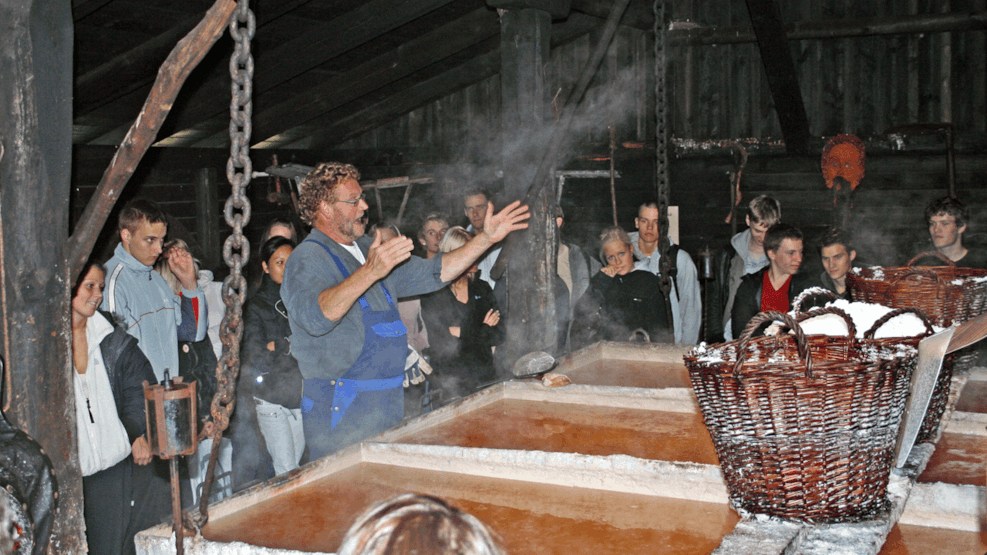
Læsø Saltsyderi
Læsø Salt - popular attraction
Anyone standing in the seething hut listening to the salt-seether's tales of Læsø salt is sure to be caught up in the atmosphere in the hut, by the beam construction, the simmering of the water, and the rays of light mingling with the steam and the smoke from the fire. It's not a new phenomenon on Læsø. From the 12th century and for the next 500 years, the inhabitants of Læsø produced salt in this manner.
Production as in times gone by Læsø Sydesalt is produced as pan salt in accordance with ancient recipes. The salty groundwater is obtained from wells at Rønnerne. The water is poured into large iron pans which hang over the fire. The water evaporates and when the brine is saturated the salt crystallises. It's then shovelled up into large baskets where the excess water drips off prior to the salt being dried. It's very important that the water doesn't boil, or the salt will be bitter.
Lecture It's the salt-seether's responsibility to ensure that the saltwater in the iron pans is maintained at the correct temperature. He does this using a wooden rake which he pulls through the water. It's also the salt-seether who describes his trade and the history of salt on Læsø. He does this completely free of charge for all those wishing to listen on the stroke of every HOUR from 10.00-16.00 from 1 May til 1 October, as well as at Easter and during the autumn half-term holiday.
Very salty groundwater Today, as in the Middle Ages, the brine is recovered from wells dug at Rønnerne. A combination of geology, winter storms and a dry climate mean that very salty groundwater is formed. On several occasions during the winter the seawater floods the flatlands and in the summer months there's a high rate of evaporation from the sandy surface. At a depth of approximately 2 metres down in the sand the water meets a solid layer of blue clay, which prevents it from seeping down any further, so that it remains near the surface and evaporates. The water reaches a salt concentration of up to 15 per cent. In comparison, the salt concentration in Kattegat is around 2-3 per cent.
Table salt Læsø salt is a seasoned sea salt that makes an extremely good table salt. It contains around 90% pure cooking salt (NaCl), as well as various minerals, iodine and trace elements.
Seething huts From 1990 and every year for the following 15 years, archaeologists, led by Jens Vellev and architect Hans Langballe, have carried out archaeological excavations on Læsø. The first seething hut is a reconstruction of a hut from the 12th century. It was opened on Constitution Day (5th June) in 1991. In 1998 Læsø Saltsyderi was extended with a large double hut, which is a reconstruction of a building that was excavated on Langerøn.
Salt and psoriasis
It's a well-known fact that saltwater treatment helps to alleviate and soothe the skin condition called psoriasis. It's also known that salt, iodine and magnesium have a greater effect in combination. After 1 week's seething, the water that remains is a saturated brine with a high content of iodine and magnesium.
Salt spa in the church
Læsø Kur is a spa resort based on the salty groundwater from Rønnerne. In addition to the treatment of psoriasis patients, the resort offers spa and wellness treatments to all its guests.